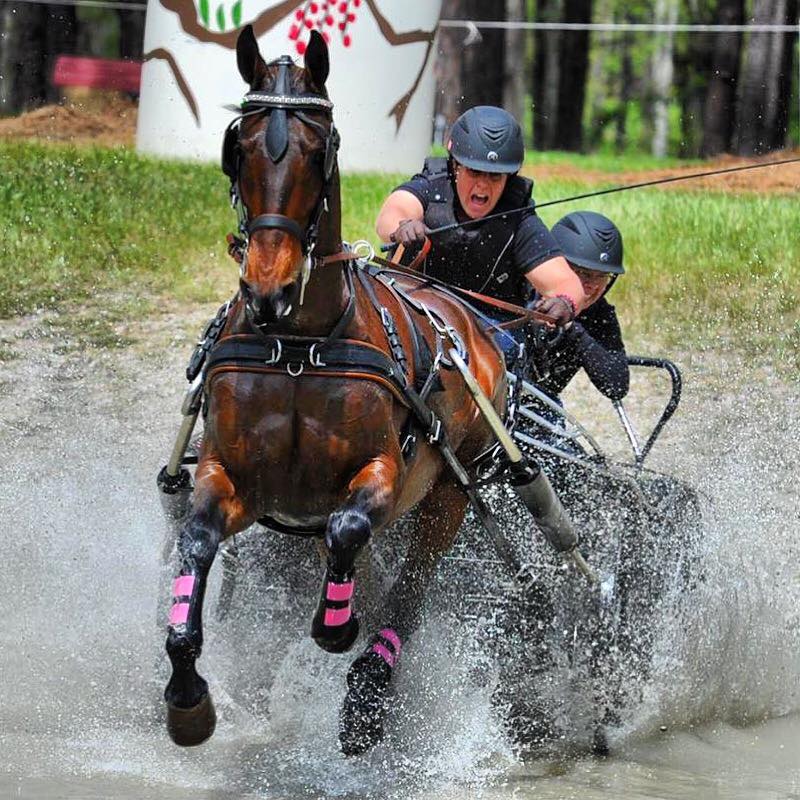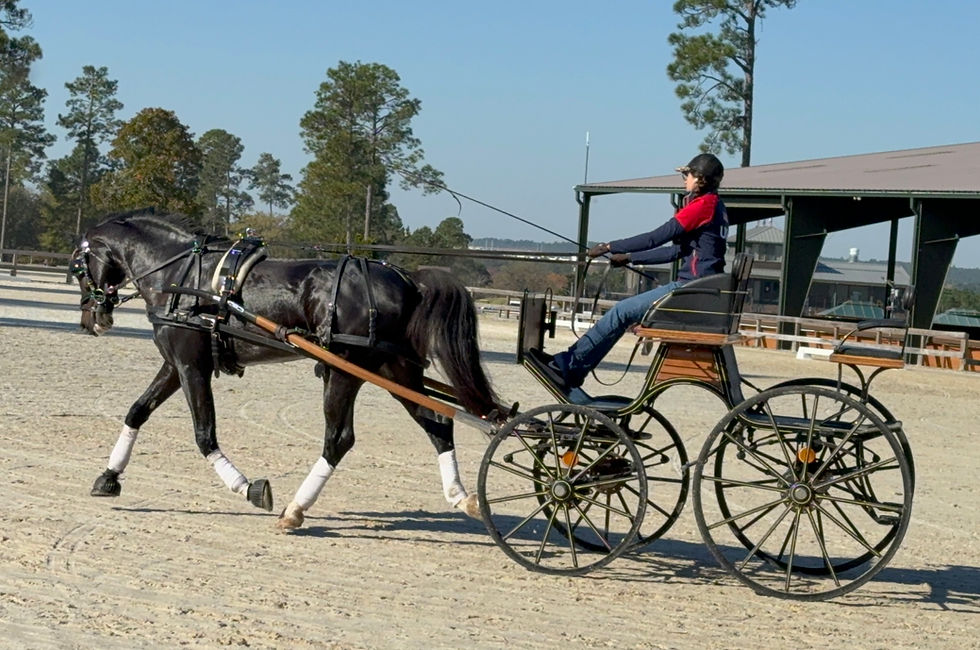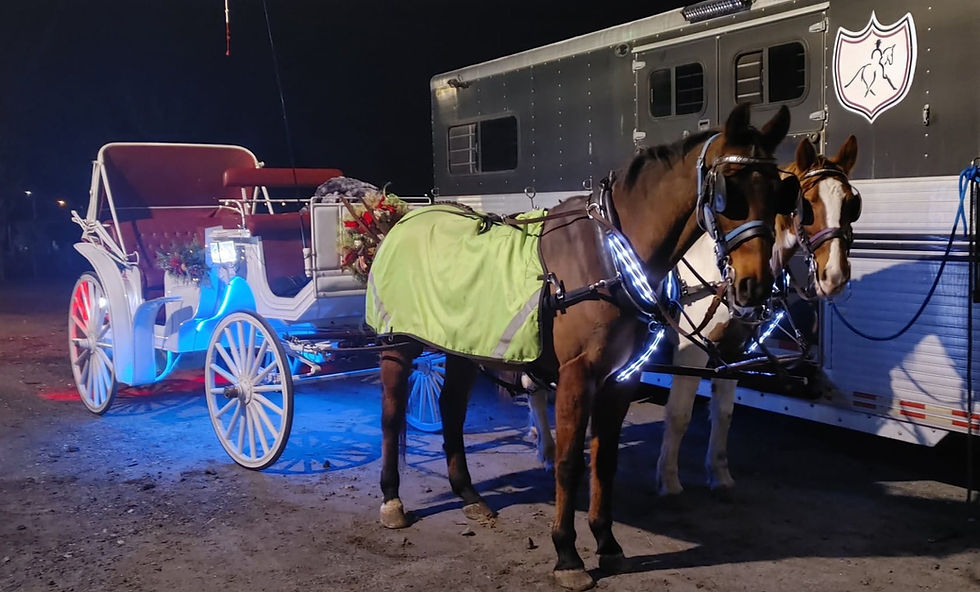How to Properly Use a Whip in Carriage Driving
- jess3152

- Nov 12
- 3 min read

In carriage driving, the whip is far more than a mere accessory — it’s an extension of the driver’s hand. Used correctly, it communicates clarity, finesse, and respect. Used incorrectly, it can confuse or even frighten a horse. Understanding how to use the whip properly is key to developing harmony between horse and driver.
1. The Whip as a Communication Tool
In driving, the whip replaces the leg aids that a rider uses under saddle. It’s your way of saying, “step up,” “move over,” or “pay attention.” The whip’s purpose is to refine communication — not to punish. The lightest touch or even the sound of the whip moving through the air can be enough to convey what you mean when your horse understands its language.
A well-trained driving horse learns to interpret the whip’s touch on different parts of their body:
Side of the croup: encourages more impulsion or forward movement.
Side of the barrel: asks the horse to move sideways or yield.
Inside shoulder: helps guide or correct straightness through turns.
2. Proper Position and Handling
The driver’s whip hand should hold the whip lightly, often in the right hand, angled forward so the lash rests just above the horse’s hindquarters when at rest. A properly balanced whip should feel like an extension of your arm, not a burden. The whip should always be carried upright — never resting on the ground, the carriage, or flopping behind you.
When using the whip, keep your movements small and deliberate. A good driver can make a precise, soft touch that the horse feels without being startled. The key is subtlety — a whisper, not a shout.
3. Timing and Precision
As with all communication in driving, timing is everything. The whip cue should coincide with your voice and rein aids. For example, if you ask your horse to trot on, give the voice command first, then follow with a light flick or tap of the whip as a gentle reminder to respond. When the horse does respond, immediately relax your whip hand as a form of praise and release.
Consistency is crucial. If you only use the whip when you’re frustrated, your horse will associate it with tension rather than guidance. Use it regularly — lightly and kindly — so it becomes a familiar, trusted part of your communication.
4. Choosing the Right Whip
Not all whips are created equal. A good driving whip should:
Be long enough that the lash can comfortably reach your horse’s shoulders when extended all the way without you leaning forward.
Be well-balanced, so it feels steady in your hand.
Have a comfortable grip that doesn’t slip, even in warm or wet conditions.
A whip that’s too short, heavy, or unbalanced can make your aids clumsy and ineffective — frustrating both you and your horse.
5. Developing a Light Hand and a Soft Mind
Ultimately, the whip is about finesse, not force. The best drivers make their aids invisible — a small motion here, a breath there — so that it looks like the horse is reading their mind. This comes from hours of quiet practice and mutual trust. A whip used with patience and empathy builds a confident, responsive partner.
Remember: in the right hands, the whip is not a tool of domination, but of dialogue. It helps you create a conversation of subtlety and softness — the true art of carriage driving.




Comments